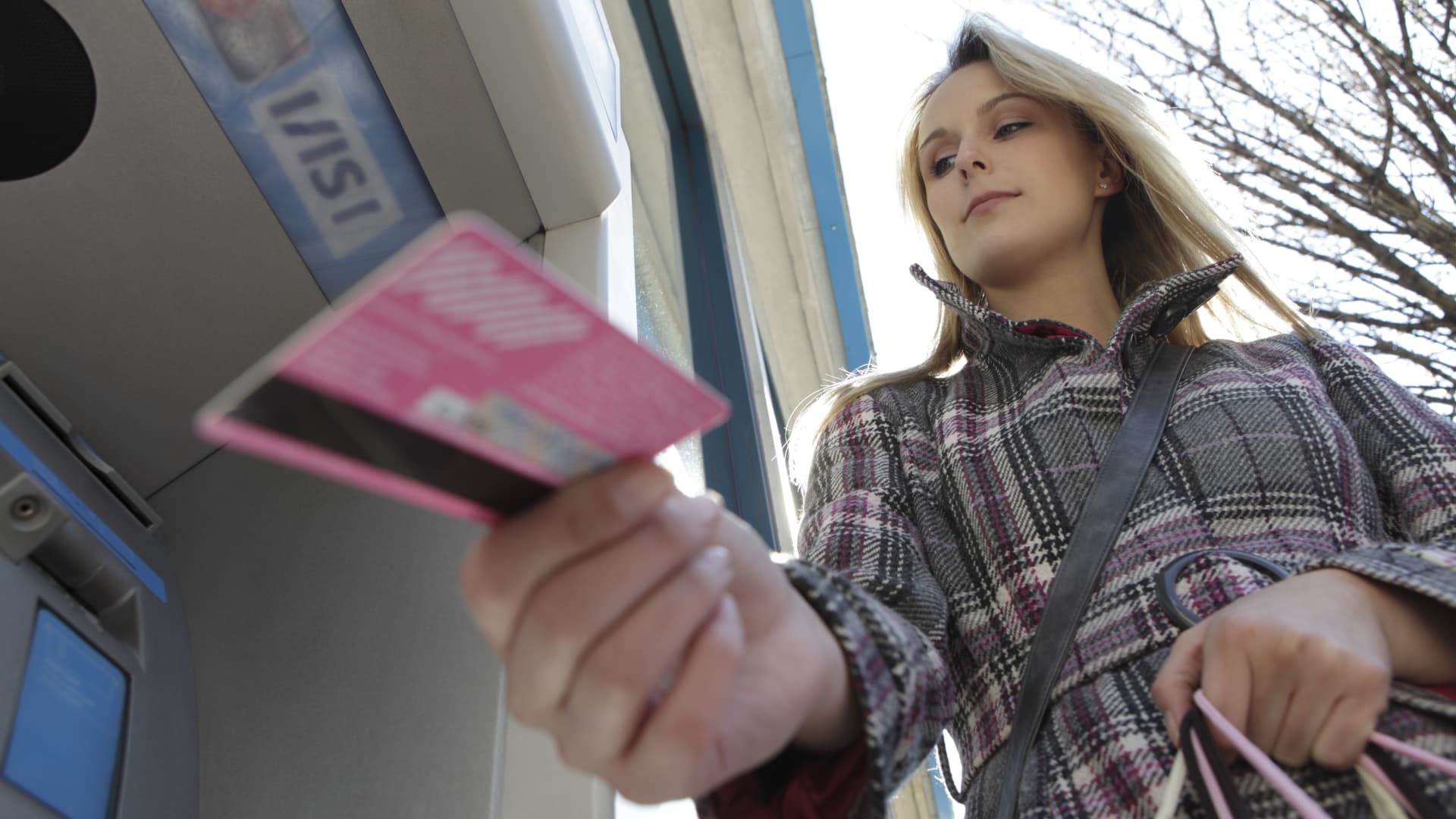
Consumers are spending more to keep up with the surging cost of living and it may get worse before it gets better.
“Even though wage growth has been the best in decades, it’s been outpaced by increased household costs,” said Greg McBride, chief financial analyst at Bankrate.com. “With inflation at a 40-year high, that has everybody concerned.”
After the Federal Reserve raised interest rates for the first time in more than three years, Chairman Jerome Powell vowed tough action on inflation, which he said jeopardizes an otherwise strong economic recovery.
They’ve got to catch up and they’re not going to do that with baby steps.
Greg McBride
chief financial analyst at Bankrate.com
Now the expectation is that the central bank will hike rates by half a percentage point at its meeting this week.
“The Fed is behind the curve, they’ve got to catch up and they’re not going to do that with baby steps,” McBride said.
The move will correspond with a hike in the prime rate and immediately send financing costs higher for many forms of consumer borrowing.
Where interest rates will rise
Consumers will see their short-term borrowing rates, particularly on credit cards, among the first to jump.
Since most credit cards have a variable rate, there’s a direct connection to the Fed’s benchmark, so your annual percentage rate will increase with each move by the Fed, usually within a billing cycle or two.
Adjustable-rate mortgages and home equity lines of credit are also pegged to the prime rate. Most ARMs adjust once a year, but a HELOC adjusts right away.
Because 15-year and 30-year mortgage rates are fixed and tied to Treasury yields and the economy, homeowners won’t be impacted immediately by a rate hike. However, anyone shopping for a new house is already going to pay more for their next home loan (the same goes for car buyers and student loan borrowers).
“The predicted rise already has been built into mortgage rates,” said Holden Lewis, home and mortgage expert at NerdWallet.
The average interest rate for 30-year fixed-rate mortgage rose to 5.37% last week, the highest since 2009 and is also expected to continue to move higher throughout the year.
Here are three ways to stay ahead of rising rates.
1. Pay down debt
As rates rise, the best thing you can do is pay down debt before larger interest payments drag you down.
When you look across the debts that you owe, to the extent that you can, pay down the higher interest rate debt first, said Christopher Jones, the chief investment officer at Edelman Financial Engines — and “credit cards tends to be by far the highest.”
In fact, credit card rates are currently just over 16%, significantly higher than nearly every other consumer loan and may go as high as 18.5% by the end of the year — which would be an all-time record, according to Ted Rossman, a senior industry analyst at CreditCards.com.
If you’re carrying a balance, try calling your card issuer to ask for a lower rate, consolidate and pay off high-interest credit cards with a lower interest home equity loan or personal loan or switch to an interest-free balance transfer credit card.
“Zero-percent balance transfer cards are alive and well,” said Rossman, adding that cards offering 15, 18 and even 21 months with no interest on transferred balances are “a great way to save hundreds, maybe thousands of dollars in interest.”
2. Find a better savings rate
While the Fed has no direct influence on deposit rates, they tend to be correlated to changes in the target federal funds rate. As a result, the savings account rate at some of the largest retail banks has been hovering near rock bottom, currently a mere 0.06%, on average.
Because the inflation rate is now much higher than this, any money in savings loses purchasing power over time.
“The worst would be if your borrowing cost increases but you are not benefiting from a higher savings rate,” said Yiming Ma, an assistant finance professor at Columbia University Business School.
Thanks, in part, to lower overhead expenses, the average online savings account rate is often higher than the rate from a traditional, brick-and-mortar bank.
Meanwhile, top-yielding CD rates are averaging more than 1% — even better than a high-yield savings account.
The CDs that offer the highest yields typically have higher minimum deposit requirements versus an online savings account and require longer periods to maturity. That means that money isn’t as accessible as it is in a savings account.
“You don’t put money in emergency savings for the prospect of great returns,” McBride said. “It’s the buffer between you and 17% credit card debt when an unplanned expense arises.”
However, “if you have spare savings, think about deposits that can be set aside,” Ma added. “Now is the time to make use of that increase in rates.”
3. Boost your credit score
As a general rule, the higher your credit score, the better off you’ll be.
Borrowers with good or excellent credit (generally anything above 700 or 760, respectively) will qualify for lower rates and that will go a long way as the cost of financing creeps up.
For example, shaving a percentage point off a new auto loan can save up to $50 a month, according to Francis Creighton, president and CEO of the Consumer Data Industry Association.
On a 30-year mortgage, even snagging a slightly better rate can mean monthly savings in the hundreds.
“For someone who is trying to make ends meet, that’s real money,” Creighton said.
The best way to increase your credit score comes down to paying your bills on time or reducing your credit-card balance, but there are even simple fixes that can have an immediate impact, such as checking your credit report for errors, Creighton advised.
“You want to be going into the inflationary period in the strongest position you can be in.“
Subscribe to CNBC on YouTube.




